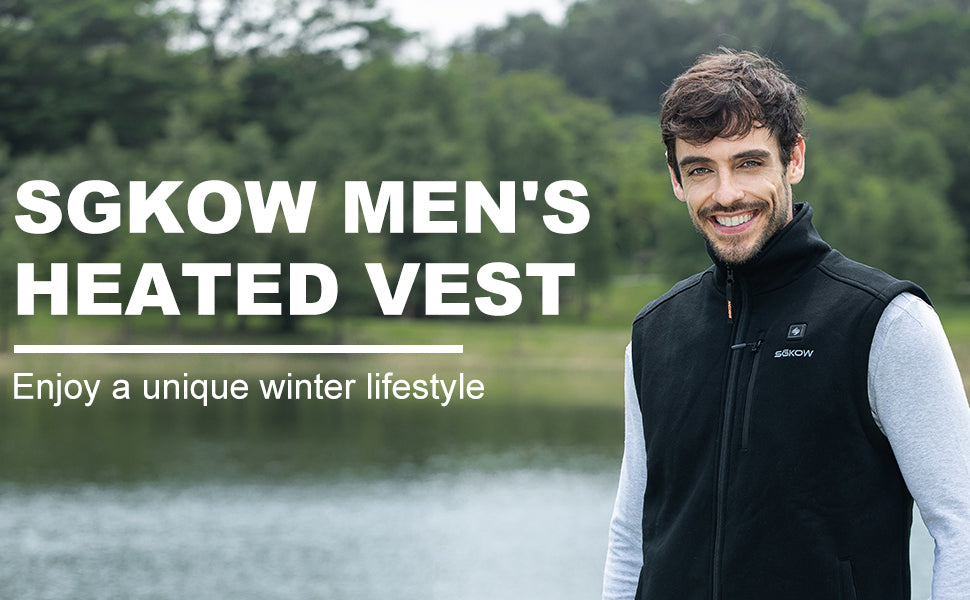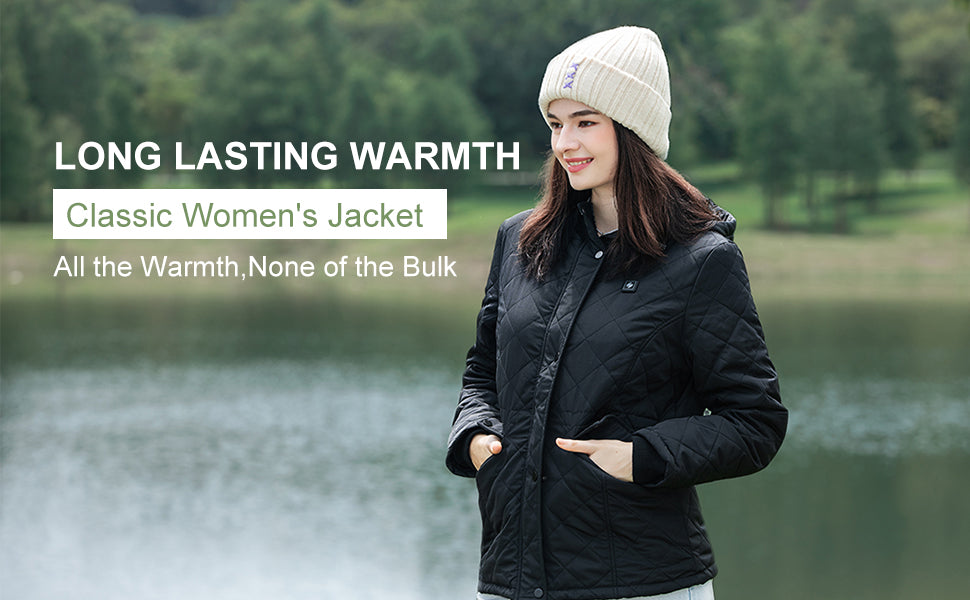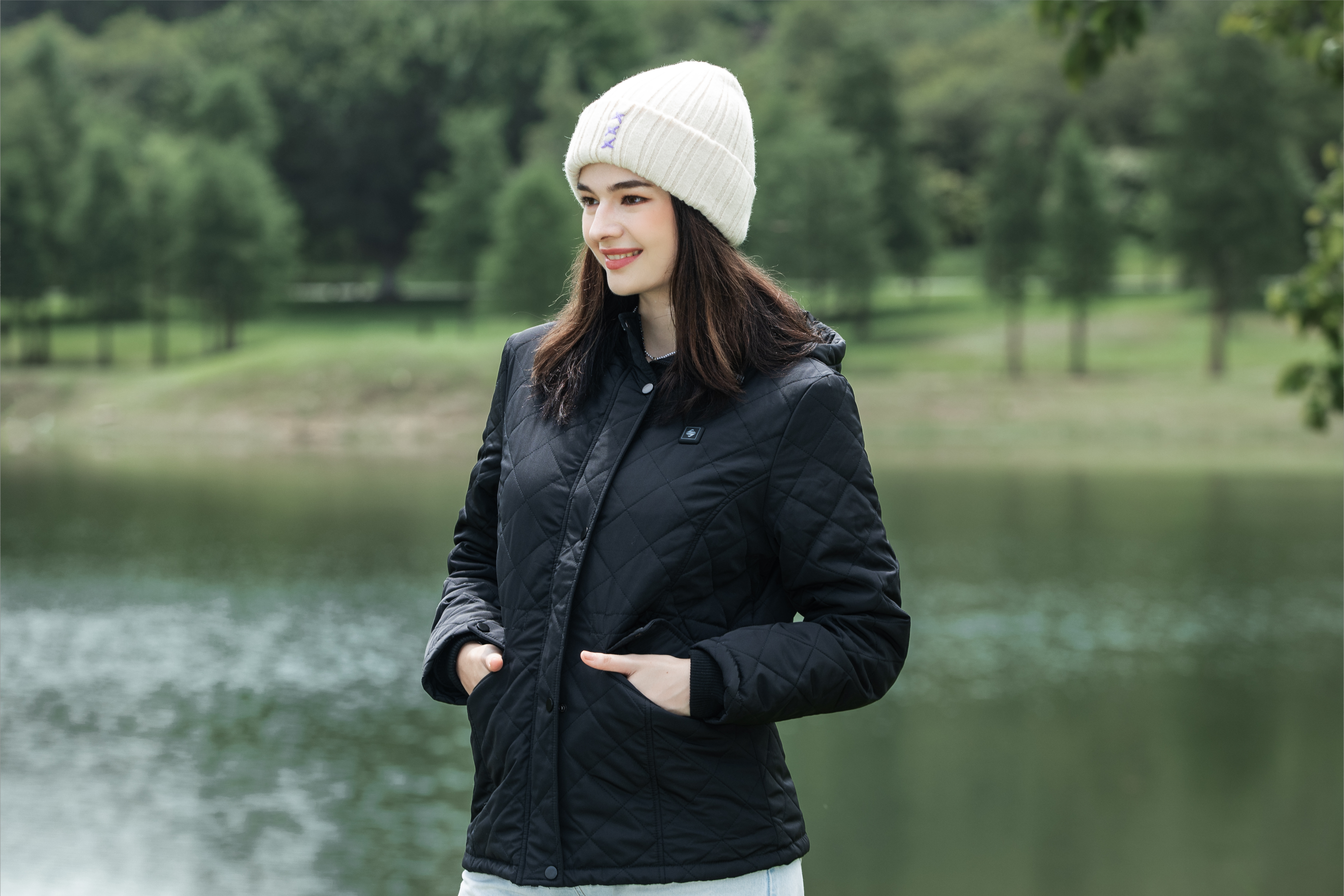Are Heated Vests Dangerous?

Technology has taken over all spheres of the world. Apparel has also come under this category. Heated vests are the modern solution to cold weathers and low temperature sport activities. These are superior to traditional clothing in terms of protecting against cold. They help regain focus in skiing, snowboarding, sledding and ice skating.
Warming up the body, they improve the circulation of blood in the body to increase energy levels. Since the inception of heating clothing in the 1900s, they have become prevalent because of their convenience and effectiveness. These are safe to use If purchased from verified manufacturers.
In this regard, we suggest looking into SGKOM’s heated vests, which are lightweight as well as durable. This platform is a certified provider of heated apparel for both men and women. They offer latest technology to provided controlled heat settings.
In this article, we will look into the details of heated vests and all the benefits and risks associated with them.
How Heated Vests Work
Technology and Working of a Heated Vest
Heating elements such as carbon fiber sewn into the fabric, a rechargeable or disposable battery, and a temperature controller to regulate the heat output are the three main components of the cheated vest.
When the power switch on the heated vest is switched on, an electrical current flows from the battery to the heating components. When the heating components are activated, they warm the vest's material. This assists in warming the body and maintaining comfort during chilly conditions.
The size and length of the heating components in a heated vest affect how much warmth they produce. The quantity of current that flows through the heating components is also a factor. The temperature controller gives users the ability to adjust the amount of heat produced to meet their needs.
Different Types of Heating Elements
Individual needs and preferences define the heating elements used in heated vests. However, their many properties and applications should be considered to make a proper choice. Here we have mentioned some of the popular elements.
1. Carbon-Fiber
These heating elements are the standard provision for heated vests. They're constructed from carbon fiber. SGKOW’s Men’s lightweight vest has 5 built-in carbon fiber heating elements. It can be an excellent choice as these cover the core areas. They are also comfortable to wear.
- This is a material with great strength.
- It is also lightweight and has high electrical conductivity.
- Due to their ability to be comfortably sewn into cloth, they are well-suited for use in heated vests.
- It achieves a comfortable temperature rapidly and maintains it uniformly.
2. Metal-based
Heating components that incorporate metal, such as stainless steel or copper, are very efficient.
- Their durability makes them preferable to carbon fiber heating components. But they are more rigid.
- Heated vests designed for more physically demanding tasks, such as construction work or riding bikes, often include metal-based heating components.
3. Nichrome
Heated vests also make use of the nickel-chromium alloy known as "Nichrome."
- It is a strong and durable material.
- It is also an excellent heat and electrical conductor.
- However, unlike carbon fiber components, Nichrome heating elements are stiff. They may not be as easy to wear.
4. Graphene
Graphene is a sheet composed of carbon, only one particle dense.
- It's very pliable and conducts electricity very well.
- The use of graphene heating components, a relatively new technology, is on the rise in heated clothing like vests. They are a versatile and long-lasting alternative to standard metal heating components.
- They also provide some benefits of carbon fiber.
Power Sources
Heated vests are operated with a variety of power sources depending on their maze. Some prominent types are mentioned here.
1. Rechargeable Battery
One popular resource of power for heated vests is rechargeable batteries. Heated vest battery are portable, durable, and reliable. According to the capacity of the battery and the temperature level chosen, the overall lifespan of a heated vest with rechargeable batteries can shift.
These are currently used in SGKOW’s classic heated vests for man. These are powered with 7.4V/2A, 1000mAh rechargeable power source. These have 3 heat settings as well for the user.

2. Disposable Battery
These are more cost-effective than rechargeable batteries. But their lifetime is much shorter. For occasional users, disposable batteries may be an economical choice.
3. Plug-in Battery
Power-hungry heated vests for extensive use require a consistent power source to work. 12 volts is generally required for such batteries. These can be inconvenient as they are not portable. They constantly require a power source to function. A motorcycle's battery can be used to plug these in while on road trips in cold areas.
Potential Benefits of Heated Vests
Comfort
- In chilly weather, heated vests may provide an extra layer of insulation without adding weight. For those who reside in colder areas or like outdoor sports activities, these may come in handy.
- Comfort in the cold may be increased with the help of these. This is due to the fact that the vest's warmth may significantly contribute to comfort. These can keep away shivering and uneasiness.
Therapeutic Effects
- The warmth from a heated vest helps ease soreness and stiffness in muscles. The reason for this is that increased body temperature leads to better circulation. It has the potential to ease muscular tension.
- Hypothermia is a state of having an abnormally low internal body temperature. Insulating the body using a heated vest is one way to keep away the effects of hypothermia.
- An increase in endorphins may result from wearing a heated vest. The chemicals known as endorphins help alleviate pain and improve happiness. This has the potential to boost an individual's overall mood.
Energy Efficient
- These heated vests are energy efficient as they need little power to operate. But they provide a significant amount of heat.
- A heated vest's heating components are manufactured to heat up rapidly and uniformly. They save power while providing enough warmth.
- Due to having insulation, these heated vests are known to keep heat within for a longer time. This helps conserve energy as well.
Reported Incidents and Concerns
The benefits of heated vests are endless. However, because of some issues such as heating and construction, malfunctions have lead to a few incidents. Some recorded incidents and accidents include the following:
- A guy in the United States suffered burns from an overheated heated vest in 2017.
- A Canadian lady was hospitalized with burns in 2018 when her heated vest caught fire.
- A guy in the UK suffered an electric shock in 2019 due to a defective heated vest.
Here are some common user complains of heated vests.
- Some users have complained about heated vests getting too hot even at low temperatures.
- A few others individuals complained about not having too long of a battery life of rechargeable batteries.
Potential Risks and Dangers
With a variety of benefits, there are some potential risk associated with the use of heated vests.
1. Burns and Overheating
These vests can heat with temperatures as high as 100°F-150°F. Beyond this can lead to skin irritation and eventually burns. The heating elements can be very hot. It is advised to avoid touching it directly.
The heating elements can also malfunction If not monitored regularly. This can cause skin allergies and burns as well. A prolonged exposure to this heat can cause swelling, heat exhaustion, nausea and dizziness. If the temperature gets too high, it can also result in a heat stroke If not regulated properly.
2. Electrical Hazards
Improperly constructed or managed heated vests might cause an electrical shock. When both the positive and negative ends of a circuit are connected directly, a short circuit occurs. Defective wire insulation or a foreign item in the circuit might cause this.
Wiring, power, and heating element issues are all potential sources of electrical damage in the vest. The danger of electric shock increases if moisture gets into the heating components of the vest. If it shows any symptoms of wear and tear, get it repaired or replaced immediately.

3. Battery-Related Issues
If the battery is overcharged, it can sometimes lead to overheating. This can cause the battery fluid to leak sometimes. The chemicals in the battery can leak out, burning clothes and even skin.
Rechargeable batteries used in heated vests can be toxic If not disposed of carefully. They contain chemicals in it, which can be acidic or alkaline in nature. For an eco-friendly effect, it is recommended to dispose of these at specific waste-management facilities.

4. Material and Construction Concerns
Materials of heating elements and frayed wires in the circuit are flammable. With time, If the vest is of low quality, the insulation is prone to damage. This can result in short circuits and fires.
High-quality materials and construction should be applied in heated vests. They should be of industry standards and pass all safety requirements.SGKOW heated vests are certified and use materials that are premium quality for safe use.
Safety Precautions and Recommendations
- Reading the instructions from the manufacturer is important. This helps the user understand the working and limitations of the vest. It can assist the user in detail over the operations of the vest, as well as to control temperatures.
- Use the vest's lowest heat setting first. The temperature should be increased gradually to prevent overheating.
- In order to prevent overheating while wearing the vest, it is recommended to take occasional breaks. The vest is less likely to overheat and catch fire if you do this.
- Don't wear the heated vest if the weather in wet conditions. There is a risk of electrical shock from the vest's wet heating components. It also raises the potential for a fire.
- If the vest is showing indications of wear and tear, it should be fixed or replaced right away. These include such frayed cables or a dead battery.
- Make sure you get a vest that fits properly. Tight vests are uncomfortable and might limit movement.
- Layer the vest over clothing. This will prevent skin from being damaged by the vest's excessive heat.
- Heated vets should be avoided while sleeping. Overheating and burns are possible outcomes.
Regulatory and Industry Standards
Most heated vests have to comply with the following standards and regulations.
1. UL 1581
All electric heating appliances must adhere to this standard to ensure their safe use. Specifications for insulated, wired, and assembled heated vests are included.
2. IEC 60335-1
Security of home equipment is addressed in this regulation. Insulation, electrical connections, and other aspects of heated vests are specified in this.
3. CPSC Regulation
In the United States, heated vests are regulated by the Consumer Product Safety Commission (CPSC). Many safety regulations for heated vests have been published by the CPSC. These regulations specify what kind of things must the vests feature. Insulating material, electrical wiring, and construction quality considerations are kept in mind.
4. Industry Associations
To guarantee the quality and security of heated vests, industry associations regulate standards. They do this by establishing promoting safety guidelines. They promote these guidelines as well. Both manufacturers and consumers may benefit from the instructions they provide. They also work with the federal government to ensure accordance with safety guidelines.
Conclusion
Heated apparel has taken over the industry by storm. They are the latest technology employed by sportsmen as well as public to stay warm in ancient weathers. They have a variety of benefits from comfort to offering medical health benefits. However, user guidance is required for the safe use of these vests. It’s important to read and understand all instructions labeled on the heated vests user manual. Ensure that all components are functionality properly, regularly, for a safe use.























Leave a comment